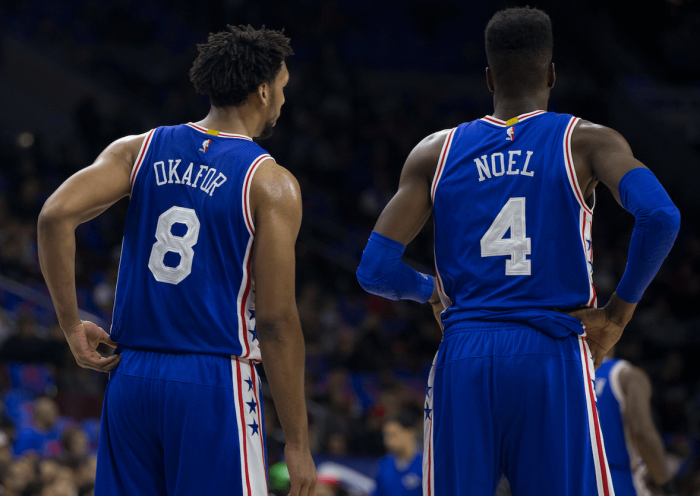The Phillies made no effort this off season to pursue top-line free agents. They continued to trade valuable players, like closer Ken Giles, for promising but unproven kids – let’s call them “assets.” They’ll enter April with 350-1 odds to win the World Series. A young analytics-based GM drives the bus. Sound familiar?
On its face, the Phils too-late-arriving rebuild seems modeled after the 76ers Tank-a-Palooza, now stumbling through its third season. Indeed, the few remaining Sixers loyalists strain to point out similarities. Hey, misery loves company. But what’s coming to Citizen’s Bank Park bears little more than a surface resemblance to the dreck that stains the floor a few blocks away. Any rational fan can see why.
First, and most obviously, only one of the two teams is deliberately uncompetitive. Sam Hinkie’s strategy is this: Lose as much as possible to gain the best odds in the NBA’s draft lottery. That’s why the Sixers have fallen – over the past four years – from 34 wins to 19 to 18 to 8. We’re approaching a half-decade devoted to Ping-Pong balls. It’s why we still get nights like Sunday in Orlando, when the dispirited Sixers gave up 77 points in the first half. Coach Brett Brown called his players’ effort, “unacceptable and unprofessional.” Not unusual, however. Brown’s charges have now given up an average of 120 points in their last six games – all losses. The Phils will lose – perhaps close to the 99 games they dropped last year. But losing, finishing last, is never the goal. In part, this is because of the nature of the two sports: Most years the payoff of the top pick in MLB isn’t as grand as it is in the NBA. Consider, just one top overall pick since 1965 (Ken Griffey, Jr.) has made Baseball’s Hall of Fame. By contrast, 11 NBA No. 1’s since then are in Springfield, with Shaquille O’Neal, Allen Iverson, Tim Duncan and Lebron James guaranteed entry. That elusive prize is why Hinkie never made an effort to improve beyond the draft. (unless you want to call Nik Stauskas and his 38 percent shooting an improvement). It’s why Hinkie entered 2015-16 with no viable point guard, cavalierly retarding the progress of the few viable players he had. Only after NBA brass forced the 76ers to bring in Jerry Colangelo did help arrive in the form of Ish Smith. Now Ish is no star, but at least he can put the ball into the hands of Jahlil Okafor and Nerlens Noel about seven times a game. The Phils’ equivalent of such negligence would have been coming north without a rotation beyond youngsters Aaron Nola and Jerad Eickhoff. Give GM Matt Klentak credit for adding competent veterans Jeremy Hellickson and Charlie Morton, along with two getting two Major League-ready starters (Vincent Velasquez and Brett Oberholtzer) in the Giles trade. Klentak also signed slick-fielding centerfielder Peter Bourjos to protect his young hurlers on fly balls to the gap. There’s another key difference. The Phils’ don’t plan to stay lousy for as long as it takes to strike gold. Hinkie – until ownership tells him no – will keep nudging the process further down the road, as in, “Hey, let’s swap Okafor for another lottery pick!” The Phils must be patient with J.P. Crawford, Nick Williams and Jorge Alfaro. But they don’t figure to trade them for other future promises. The goal is that each comes up and proves his worth.
It may not pan out. Prospects get injured, or fail to reach expectations. But it’s a viable plan, far more realistic than tanking season after season in hopes that a lottery hopper belches out your lucky combination. And it’s sure got more integrity.
Glen Macnow: Philadelphia’s two painful rebuilds are not created equal

Getty Images


























